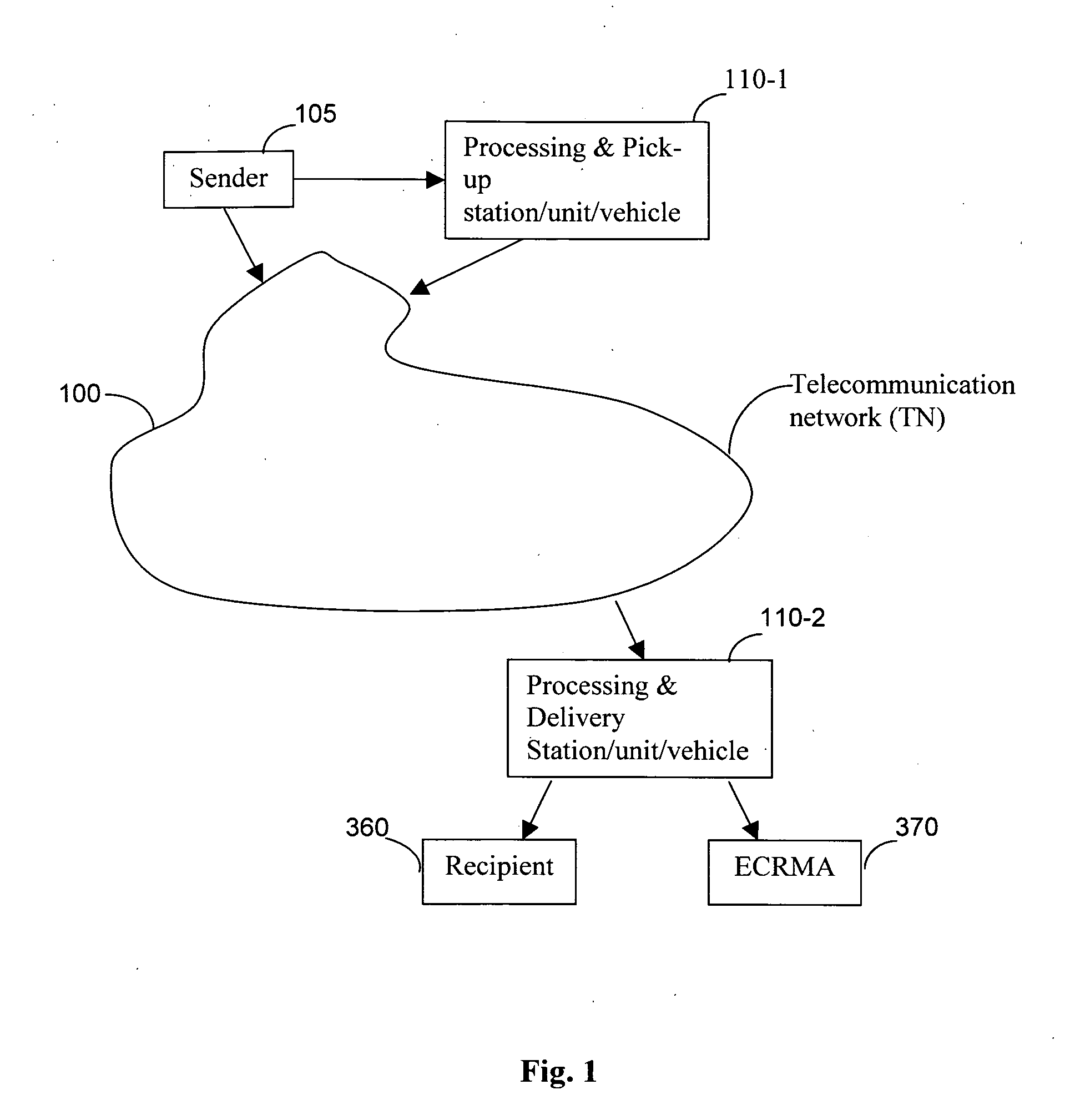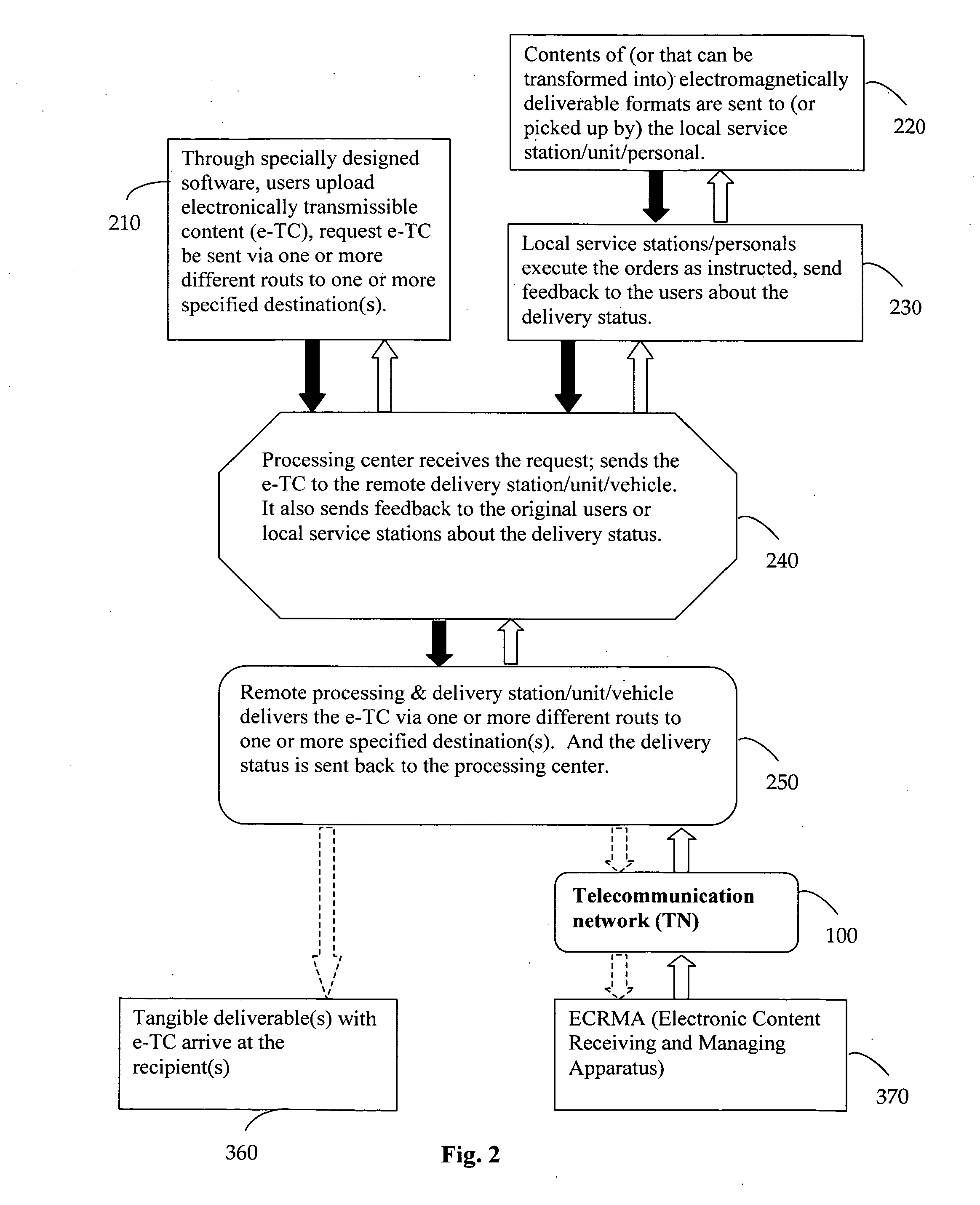User initiated and controlled delivery in hybrid mode of electromagnetically transmissible contents to recipients in designated delivery locations or apparatus
a technology user-initiated control, which is applied in the field of user-initiated control of electromagnetically transmissible contents to recipients in designated delivery locations or apparatuses, can solve the problems of limited communication to a person with limited or even no internet access, and limited distribution of printed materials for product or service promotion, etc., to facilitate more rapid and efficient delivery of electronic contents, shorten delivery time, and improve delivery efficiency
- Summary
- Abstract
- Description
- Claims
- Application Information
AI Technical Summary
Benefits of technology
Problems solved by technology
Method used
Image
Examples
Embodiment Construction
Reference is now made to the above listed figures for describing, in detail, the preferred embodiments of the present invention. The figures referred to and the accompanying descriptions are provided only as examples of the invention and are not intended in any way to limit the scope of the claims appended to the detailed description of the embodiment.
FIG. 1 is a functional block diagram of a hybrid electronic content delivery system of this invention. An electronic content sender 105 has an option to either upload the electronic content as an electronically transferable file through a telecommunication network (TN) 100 such as an Internet telecommunication network (TN) 100 to transmit the electronic content to a first processing / pickup / deliver station or vehicle 110-1. The electronic content sender 105 has an option to deliver a physical embodiment of the multimedia contents such as a USB drive, a DVD / CD, a flash memory stick, or a hardcopy or any other kind of content embodiment i...
PUM
 Login to View More
Login to View More Abstract
Description
Claims
Application Information
 Login to View More
Login to View More - R&D
- Intellectual Property
- Life Sciences
- Materials
- Tech Scout
- Unparalleled Data Quality
- Higher Quality Content
- 60% Fewer Hallucinations
Browse by: Latest US Patents, China's latest patents, Technical Efficacy Thesaurus, Application Domain, Technology Topic, Popular Technical Reports.
© 2025 PatSnap. All rights reserved.Legal|Privacy policy|Modern Slavery Act Transparency Statement|Sitemap|About US| Contact US: help@patsnap.com



